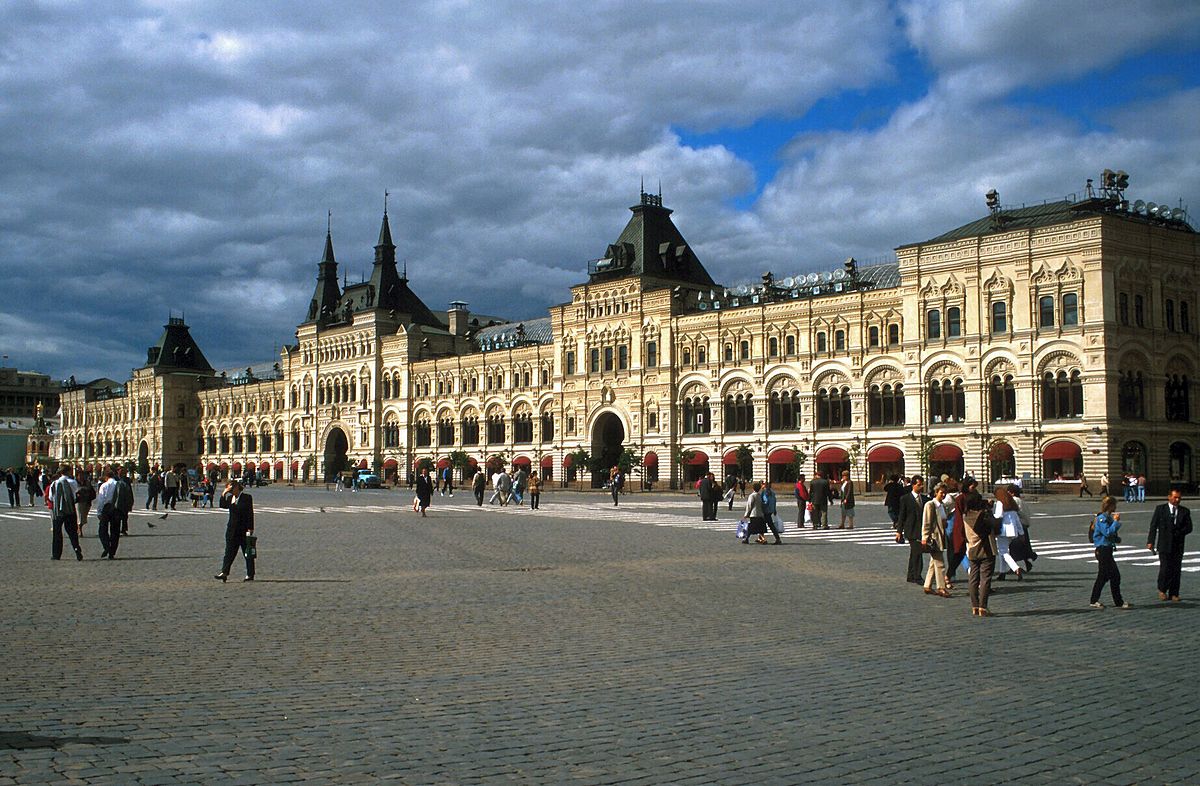Both Lenin and Stalin were looking to move Russia ever more forwards to communism; pivotal in this aim was the creating of the “socialist man” which was embedded in the proletarianisation of the people. It was widely believed by theorists that the masses had to be proletarians in order to create the socialist society and ultimately communist state. This was a belief Lenin began and Stalin amplified during his years in power. One of the consequences of these policies was the worsening of social conditions in Russia, meaning that life worsened for many during the paranoid reign of Stalin and Khrushchevs rule. The drive for industrialisation in order to keep up with the west and the dogmatic need to ensure a communist state emerged resulted in the normal people of Russia suffering the most.
Harsh living conditions are persistent through Russian history, as a result of geographical limitations with the country as well as a vast sprawling empire. Russia had always struggled to feed itself, as well as emerge from a feudalistic society. During Stalin’s time in power, much of these issues still persisted. In 1929, peasants were horded into collective farms in order to try and further establish a communist state. Despite the intentions to improve grain and food production, by modernising the backwards peasants with Motor Tractor Stations, conditions did not improve in the countryside and worsened as a result of persistent grain requisitioning and the elminate of the Kulak class, reesulting in a drop in production for a short while. As well as this, more and more emigrated into the towns, which were already under strain of poor conditions in Tsarist and later during Lenin, with long work hours and cramped conditions, with the spread of disease. The Urban labour force had doubled by 1932 and the drive to industrialise and keep up with the West meant that a 7 day working week was introduced. Moreover, harsh punishments were introduced in order to ensure the urban workers worked- arriving late or missing work would result in dismissal, eviction and even a loss of benefits and housing. Thus suggesting that for the Urban workforce life did indeed get worse. However, the rule of Khrushchev saw a slight change in the plight of the proletariat work force. Due to the relative economic success during Stalin’s time in power, Khrushchev began to focus on consumer goods with his Seven Year Plans, introducing new goods into Russian life perhaps suggesting a change in conditions. Life did get better to an extent under Khrushchev, as more goods became available but also newer housing such as Khrushchevkas were built in order to try and tackle the housing crisis. Thus suggesting that life only worsened in the period is highly invalid, as there were elements of life that improved.
As well as this Stalin used propaganda to promote his socialist ideals in the workforce and “socialist man” ideal. Life arguably improved, even during Stalins’ rule, as those who preformed well saw new opportunities for social advancement. For example, the Stakhanovite movement emerged from the propaganda promoted by the govermnent showing Alexei Stakhanov extracting 102 tonnes in a record time of 5 hours 45 minutes, despite his slim build. Even though this is most likely highly exaggerated, the result inspired many urban workers to work harder in order to experience new opportunities and become known as a member of the socialist elite. As well as this, the purging of white collar workers and intellectuals resulted in many vacancies in jobs at the top of factory chains, resulting in many experiencing social mobility and higher wages, showing to an extent that life did improve. During this period, and despite the relative success of the Five Year Plans, wages remained lower in 1937 than they had in 1928. People living in urban centres experienced abstract poverty, poor water supply. Lack of goods and also overcrowding were still features of life in these urban areas, meaning that life had not improved to the extent that propaganda and Stalin tried to portray.
Superficially life for women improved during this period- under Lenin women were given freedoms not experienced under Tsarist rule in order to free them for the workforce. Socialist propaganda emerged showing women as key in factories, followed by legislation to legitimatize freedoms for women such as abortions. Despite this change, Stalin reverted to more traditional policies for women as the population began to plummet, due to poor living conditions ultimately showing life was getting worse. Stalin banned contraception and in 1936 introduced fees to deter divorce which were aimed to refocus in the idea of a “socialist family”. Despite these changes women still worked, increasing to 13 million from 3 million in 1940. Many women juggled familial responsibility pushed by the governments agenda and work in order to survive, showing that life had not improved. As well as this women earned 40% less then men, lower than it had been previously. Their role was refocused again after World War Two, where they were expected to make up for the loss of the war dead, with working hours increasing for all back to 12 hours post war. Thus showing that during Stalin, life only worsened.
The Khrushchev era is seen as a “thaw” from Stalin, with de-Stalinisation, on paper, resulting in life improving for most in the Soviet Union. With the rise of consumer goods, fashion also began to emerge with magazines in the 1950s presenting women in different fashionable clothing, which was similar to fashion movement in the West. This increase in consumerism and media marketed to sell goods, suggests that people were beginning to be able to afford these forms of goods with the reopening of the GUM store in Moscow providing one of the few places that there were goods readily available. For example the sale of radios increased from 66 per 1000 people in 1955 to 171 per 1000 people in 1966- despite this showing that still not many were able to obtain goods, the amount of people who were able to access was increasing yearly, thus suggesting a slightly increase in the quality of life in the Soviet Union. The USSR boasted that the wage difference between the highest and lowest paid worker was the lowest in any industrialised country, albeit the wages were indeed lower than any other country in the first place. By 1964, the Soviet Union became a place that was indeed easier to live in than in previous eras, showing that life improved to a degree during this time.
Overall, it is unrealistic to track social change under one continuous decline or improvement. Depending on the leader, the lives of those people living under the regimes will alter and change differently and at different paces, depending on the foci of the leader. For example, Stalins rule can be categorised as a decline in standards, especially compared to the thaw that followed and the eras previous. Thus it is invalid to use sweeping statements and conclude that it only got worse; life in the USSR varied for different groups of people at different times; people were trying to survive in every regime they lived under.

